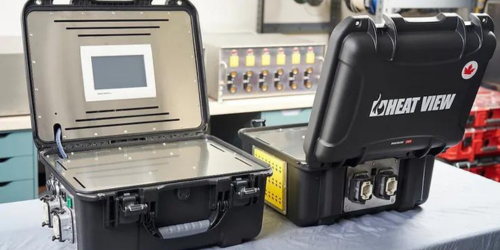Faced with a global shortage of skilled labor, surging demand for cutting-edge automation and manufacturing processes, and the rapid pace of industry 4.0 adoption, modern machine builders are increasingly opting for PC-based control systems to increase flexibility and scalability.
In this blog post, we’ll take a closer look at the implications of industry 4.0 and how PC-based control systems can improve efficiency and cost-effectiveness today – and help you prepare your business for tomorrow.
What is Industry 4.0?
The term "Industry 4.0" has been used to describe a fourth industrial revolution centered on the integration of digital technologies into industrial processes. The goal is to enhance manufacturing productivity, efficiency, and customization by leveraging the Internet of Things (IoT), artificial intelligence (AI), big data analytics, robotics, and automation.
Examples of Industry 4.0 solutions and applications include:
- Implementing agile manufacturing processes with the help of AI and customer insights.
- Enhancing quality control processes through IoT and machine learning.
- Utilizing IoT sensors and data analytics to employ predictive machine maintenance.
- Optimizing your supply chain with end-to-end visibility.
- Using real-time data to reduce waste and implement circular economy practices.
If implemented correctly, Industry 4.0 solutions can enable businesses to break down silos and adopt transparent, holistic operational approaches, ultimately optimizing resource allocation and downtime. There are, however, numerous challenges, including: overcoming outdated infrastructure, interoperability issues, workforce skills gaps, cultural shifts, and cybersecurity concerns.
Prepare for industry 4.0 with PC-based control systems
PC-based control systems offer a number of advantages over traditional programmable logic controllers (PLCs) when it comes to implementing (or being prepared to implement) industry 4.0 measures and solutions, including:
- Increased scalability and flexibility: PC-based control systems are highly scalable and adaptable to evolving technologies. Given the pace of innovation in industrial automation trends and technology, this is a major advantage, allowing you to integrate new hardware and software without overhauling the entire control architecture.
- Improved cost-effectiveness: With the ability to replace aging hardware without significant changes to the control system or software, organizations can achieve long-term cost savings and optimize lifecycle costs.
- Superior computing power: PC-based control systems leverage the latest in computing technology. As an example, the CX20x2 Embedded PC series from Beckhoff utilizes Intel® Xeon® processors with up to 12 cores. This robust computing power can be beneficial when integrating additional functionalities, such as vision systems, robot controllers, database communication, or third-party software functions alongside PLC tasks. Traditional PLCs often struggle in this area due to their more limited processing power, which limits them to specific tasks.
.
Enhance security with PC-based control systems
Over the last few years, several major PLC manufacturers have faced security breaches via software "back doors," which has put the need for comprehensive security measures in the spotlight.
One of the advantages of PC-based control solutions is that unlike proprietary PLC systems, they are not closed ecosystems, allowing seamless integration of third-party software alongside control functionalities like HMI, PLC, and motion control software. This flexibility provides a much larger set of options to bolster and standardize security measures within your industrial operations.
Standards for PC-based data security also continue to improve. Beckhoff has actively collaborated with organizations like the OPC Foundation to develop new standard protocols for secure and reliable data communication between controllers and the enterprise, including cloud connectivity. This collaboration has contributed to the development of the OPC Unified Architecture (UA) standard, with Beckhoff being among the first to support this communication from control software with both server and client implementations running on the controller.
Streamline machine control functionalities on a single platform
PC-based control systems centralize all automation tasks on single hardware and software platforms. This is in contrast to PLCs, which require additional hardware, separate software, and more cables for control functions like safety, motion, or vision. This approach simplifies scalability and eliminates complexities associated with managing multiple software tools and connections.
Beckhoff’s PC control systems excel in efficiency, employing a unified platform, TwinCAT, to seamlessly integrate control functions, along with EtherCAT, a fast field-bus protocol.
- EtherCAT enables rapid real-time communication between controllers and field devices, ensuring fast data transmission essential for IO and motion control applications. A single EtherCAT network can support up to 65,535 nodes with any topology, which can vastly enhance flexibility and scalability in diverse industrial settings.
- TwinCAT not only performs real-time execution of tasks such as PLC, motion and safety, but also facilitates connection with applications at the enterprise level. This provides reliable and secure communication channels crucial businesses need to differentiate themselves, scale operations efficiently, and address labor challenges effectively.

Expand access to a broader talent pool
According to IDC research, the global shortage of full-time software developers is expected to increase from 1.4 million in 2021 to 4.0 million in 2025. The US Department of Labor meanwhile, is predicting demand for software developers, quality assurance analysts, and tester jobs is projected to grow by 25% from 2021 to 2031, which is more than 8 times the average for all occupations. Suffice to say, while it is hard to hire qualified programmers today, it will only get more challenging with time.
It may be surprising, but PC-based control systems can safeguard against this growing global skills gap. Because they support commonly used programming languages and tools, such as C++, C#, and Python, among other languages commonly taught in academic institutions, they can expand your access to a much broader talent pool.
As an example, TwinCAT 3 automation software from Beckhoff supports various programming languages, including those specified in the IEC 61131-3 standard and object-oriented programming. Engineers and computer scientists can use their familiarity with Visual Studio to configure projects using TwinCAT By combining IEC 61131-3 and Visual Studio. TwinCAT provides the most universally standard environment for programming in the world.
Embracing this programming accessibility and flexibility can help you differentiate yourself on the job market, ultimately simplifying hiring and operational scaling.
.png?width=76&height=76&name=Untitled%20(100%20x%20100%20px).png)
%20(500%20x%20500%20px).png?width=700&height=700&name=Untitled%20(100%20x%20100%20px)%20(500%20x%20500%20px).png)


.png)

.png)